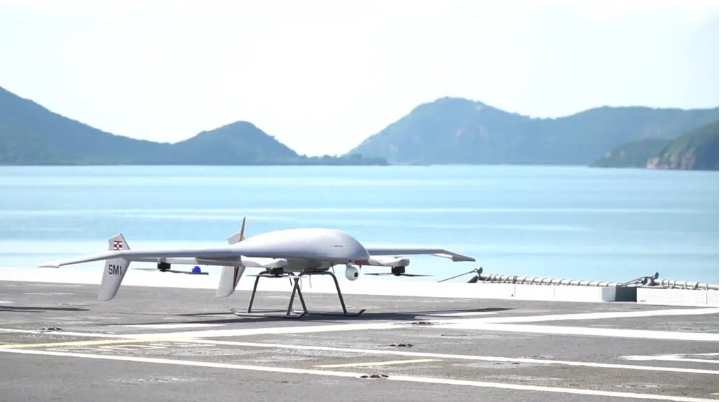The information was first reported by local defense blog AAG_th. The UAV’s subcontractors, Siam Dry Tech (SDT) Composites, which designed and will manufacture its carbon-fiber airframe, and Pims Technologies, which developed its Tactical-based Aerial Command Control System, were present at the trials.
The MARCUS-B is a fixed-winged unmanned aerial vehicle (UAV) developed to meet the specific needs of naval units operating at sea. Because of its vertical takeoff and landing capability, it can operate anywhere.

MARCUS-B Fixed-Wing VTOL UAV
The MARCUS-B UAV is based on the previous MARCUS drone, which was unveiled at the opening ceremony of an RTN naval exercise in March 2021. It is larger and heavier than the preceding model. It is 2.5 meters long and has a wingspan of 4.3 meters. It has a takeoff weight of 45 kilograms and a payload capacity of more than 10 kg. The new drone can fly at 37 knots while fully loaded within its operational range of around 160-180 kilometers.
MARCUS-B is powered by a 60 Ah battery, allowing it to fly for around two hours. It can be used on large navy ships such as frigates, amphibious assault ships, and carriers.
The cost of MARCUS-B was not specified by Thai officials, although Thai analysts believe it is a low-cost asset.
MARCUS-B is planned to begin mass production and enter service with the RTN in 2022 after the final trials are completed.






